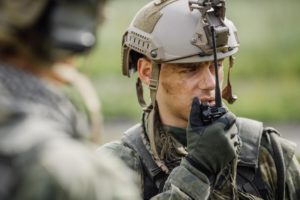Lists are irresistible, especially when one year is ending and a new one is about to begin. Lists give us, engineering folks, a sense of order, and help us better express our thoughts. Of course, lists are in use any time and all the time (how is your To Do list doing?), but at the end of the year we typically see an abundance of a special kind of list: predictions. Five trends, 8 most important technologies, 7 most popular occupations – you get the picture, right?
Not to be outdone, Softil published its list of technological predictions for 2018 and beyond a few weeks ago, and considering some bold claims we made in it, we think we have some explaining to do. Let’s start with the first one: the death of the radio.
Let’s get things straight right away: we love the first responders’ radio as much as any police officer, fireman or EMS technician – it is time tested and reliable, it’s been around for ages, and it saves lives. No question. But – it is so very, very, very limited! Yes, you can talk using the radio. And you can… hmmm, is there anything else the radio is good for? Today, any kid holds in their hand incredible power, the computing capabilities of a supercomputer of the very recent past, and communication capabilities supported by the most advanced mobile and satellite networks. Any kid can see their location on the map, send messages to anyone in the world, receive files with directions and instructions as needed, watch, record and share video, and seek the assistance of a myriad of tiny sensors around him – while a police officer can… talk. Yep, that’s all the radio is good for – and we truly believe the time has come to empower our first responders with something more efficient and technologically modern.
Anyone living and breathing technology even for a short while knows that changes don’t happen overnight. We cannot simply provide every first responder with a ruggedized, smartphone-like device tomorrow morning and tell them “Here, you are done with the radio, use this”. This is wishful thinking, and we know it won’t work. However, efforts are underway to make it happen. Starting from 3GPP Release 13, the mobile communication network standard has defined how mission critical push-to-talk over LTE (MCPTT) should be implemented. Releases 14 and 15 added mission critical video (MCVideo), mission critical data (MCData, which allows for instant messaging and group chats, file transfer and more), and interoperability with legacy systems that include the beloved radio.
 The need for radios to disappear goes way beyond the need for first responders to have modern, powerful communication capabilities for their own use. The deployment of mission critical communications over LTE will allow for something that was never possible before. First, think about the way a citizen emergency is handled today. In an emergency situation, someone will dial the emergency response number: 911 in the USA. The operator will answer the call and then use the radio to get the situation handled by first responders. Most likely (most-most likely), the citizen originated the call, with the call traversing the e911/ng911 network (pretty much the same LTE/SIP network), on a mobile device with all the advanced capabilities (think of video from the scene of the accident). Today, when this call stops at the operator with all subsequent first responders’ communication happening over the radio, all of the advanced capabilities of the originating device are wasted. Tomorrow, voice and video from the citizen’s phone can be routed to responding personnel, making the “response” far better prepared and efficient.
The need for radios to disappear goes way beyond the need for first responders to have modern, powerful communication capabilities for their own use. The deployment of mission critical communications over LTE will allow for something that was never possible before. First, think about the way a citizen emergency is handled today. In an emergency situation, someone will dial the emergency response number: 911 in the USA. The operator will answer the call and then use the radio to get the situation handled by first responders. Most likely (most-most likely), the citizen originated the call, with the call traversing the e911/ng911 network (pretty much the same LTE/SIP network), on a mobile device with all the advanced capabilities (think of video from the scene of the accident). Today, when this call stops at the operator with all subsequent first responders’ communication happening over the radio, all of the advanced capabilities of the originating device are wasted. Tomorrow, voice and video from the citizen’s phone can be routed to responding personnel, making the “response” far better prepared and efficient.
But wait, there is more. Most of today’s smartphones come with an array of sensors embedded in the device – and the ability to communicate with sensors and devices around. Using the power of what is collectively known as the Internet of Things (IoT) would dramatically enhance first responders’ operations; situations like “officer down” or “gun shots fired” and so on could be detected automatically by the device itself, thereby greatly assisting first responders – and helping to save lives.
So, what do you think now? Should the radio die to give the way to better, more capable and helpful devices? We surely think so. Will it happen overnight? Of course not, but seriously, the sooner the better, as people’s lives depend on it.






